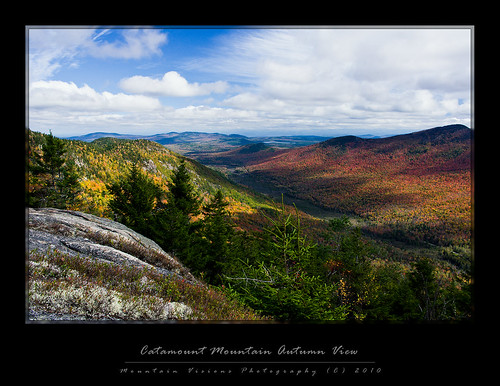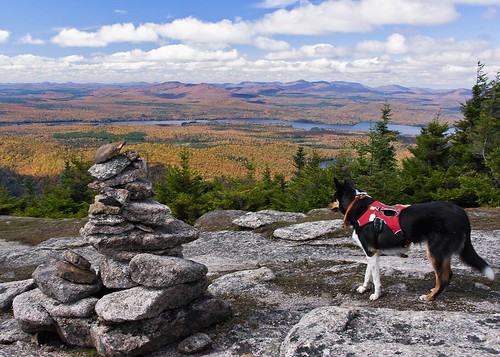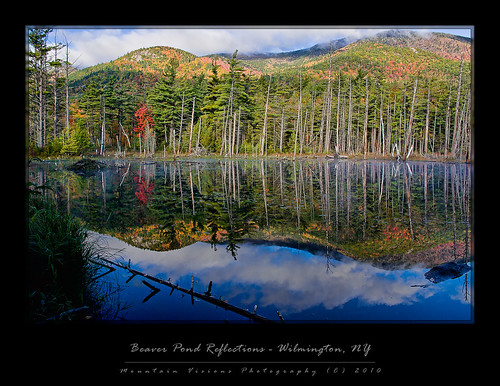Today the "New York State Department of Environmental Conservation is in the weakest position that it has been since it was created 40 years ago," with many "core programs hanging by a thread". Systematically dismantled with the precision of a hatchet over the last few years by America's most short sighted governor, the shell shocked DEC now has no leader.
Governor Paterson, not sufficiently happy gutting the DEC's budget, forcing layoffs and early retirements to unprecedented and dangerous levels, nor bargaining the state park system for part of the environmental protection fund, decided to go straight for the head of what he must feel is the states most greedy department, the DEC. No department of New York state has suffered larger cuts to it's budget than the DEC under Paterson's reign, and Friday it officially suffered the loss of it's commissioner, a rare man in politics who actually stood up for what was right.
Fired for insubordination, because he refused to resign, Alexander "Pete" Grannis is the most noteworthy in of victims in Governor Paterson's very aggressive goal of destroying the ability of the DEC to manage New Yorks environment, now and long into the future. Over the last 3 years about 20 percent of the DEC's scientists, engineers and enforcement officials have disappeared under Paterson's draconian budget cuts that seem to aggressively target the DEC more so than any other state agency.
Commissioner Grannis did a noble thing, he stood up to the lunatic running this state, and for it he lost his job. Grannis has been well liked by both hard core environmentalist, the groups those environmentalist support, and he's worked well enough with the other side to not be disliked. As a matter of fact, business and oil, gas, and mining lobbies were shocked that Grannis was fired. He was well liked within the DEC, starting as a lawyer with the DEC when it was founded 40 years ago, he then moved on to politics for 3 decades before being appointed by Governor Spitzer in 2007 to rebuild the DEC. You could say he was a model citizen, and a good public servant.
Paterson on the other hand has an absolutely appalling record when it comes to the environment, open space, regulation, and even appointments to the APA. He has used the DEC as his punching bag. A soft target that he can beat on without much opposition. There is not a single area this governor can be commended for when it comes to environmental protection. As I normally try to do, I'll leave Governor Paterson's string of sketchy ethical and personal character issues out of this discussion, but I will point out Pete Grannis lacks this trail of moral detritus.
Pete Grannis simply alerted Governor Paterson, via an internal memo, that the cuts that were being made once again to the DEC were unsustainable in the interest of the environmental health of New York State, and ultimately the health and well being of it's tax paying citizens. Unfortunately, or perhaps fortunately, someone leaked that memo, and the geniuses that most likely puppeteer Governor Paterson shot first and asked questions later. Unlike most politicians, Governor Paterson was neither elected to his current office, nor will he ever serve in elected office again. He has absolutely no reason to care what anyone thinks or what the repercussions of his actions are. For all we know, after he finishes turning the entire state into a "brown field", he might be off to another state that was run with more foresight. Furthermore, because New York has no way to recall a governor, Paterson has absolutely no reason to care.
What Pete Grannis was trying to explain in his memo is precisely what many of my blog post over the past year have been about. Quite simply, the DEC cannot do it's job as outlined under New York State environmental conservation law with the minimal resources it has left. Apparently Paterson doesn't want you to know that. He must think it better for you to assume your water isn't being polluted and your air is safe to breath. That your forest and fisheries aren't being mismanaged, and that your economic well being isn't being jeopardized. After all, being blind works for him (and that statement I assure you has very little to do with his actual disability), why shouldn't it work for you! Just close your eyes, everything will be OK!
Or will it...
From Commissioner Grannis memo:
"The public would be shocked to learn how thin we are in many areas. In many instances we have offices or sections responsible for important permitting and monitoring functions staffed by only one or two people. Some regional offices have no capacity in certain areas because key items are unoccupied and can’t be filled. As a result, we are unable to meet the expectations of both the regulated community and the public with respect to countless activities...All of the meat has been stripped off the bones, and in some cases the bones have disappeared." -Pete Grannis
"Unlike many other agencies, DEC by design has a multi-faceted mission and our core activities accordingly encompass a wide variety of areas. For example, we are responsible for ensuring environmental quality through the implementation of regulatory programs aimed at protecting air quality, water quality, managing hazardous and non-hazardous waste and cleaning up dangerously contaminated sites. We have statutory responsibility for the state’s invaluable natural resources, including all state lands, fish and wildlife populations, water-bodies such as the Hudson River, the Great Lakes and Lake Champlain, and our vast coastline. As a core element of our mission, we also provide recreational opportunities for the public, many of which are paid for directly by user fees and include heavily relied upon programs for sportsmen and sportswomen, as well as camping and hiking in New York’s constitutionally protected forest preserve. Each of our programs has a daily impact on people's lives and the health and economic well-being of the state. While each program has a vocal, politically active constituency, for purposes of this exercise we cannot treat all of them equally and still be able to operate." -Pete Grannis
- The DEC comprises 2.5% of the NYS workforce subject to executive control, yet it is required to layoff 10% of the 2,000 total positions planned to be cut
- State agencies with 100% Federal or SRO funding are NOT required by Paterson to layoff workers. However, the DEC is disproportionately required to layoff
- Although the DEC has an operations budget of $500M 75% of that budget is either federally funded OR from SRO (special revenue, other)
- The Clean Air and Water Act for example is federally funded
- SROs via game licenses fund fish hatcheries, pheasant farm, game law enforcement, wildlife and fishery biologist
- SROs finance discrete activities which means they cannot be used for the general fund
- Prior to Governor Spitzer's administration the DEC was about 800 staff members short, while the regulatory responsibilities of the DEC actually grew over that decade!
- The 2007-2008 budget added 108 positions, which was a first step to returning to necessary staffing levels to "core" programs
- Since April 2008 the DEC has lost 595 employees or 16% of it's workforce
- When the additional cuts called to be eliminated in 2010-2011 the DEC will have lost 21% of it's workforce since 2008
- Since fiscal year 2009-2010 the DEC has absorbed a 40% NPS budget decrease and a general fund budget decrease of 13%
- Commissioner Grannis does not feel the "extreme reductions" enable the DEC to fulfill it's state and federal mandates for regulation and enforcement
- Each quarter the DEC reduces essential services to the public including
- waste water enforcement, air emissions enforcement,hazardous waste, wetlands development, dam inspections, mining and drilling safety, shellfish safety, increase in time for issuance of impact studies, delays in permit approval, well plugging, reduction in game enforcement, reduction in backcountry patrols, transfer of responsibilities from sections of staff to singular individuals
- Commissioner Grannis found it ironic that while the states wildlands have seen increased use, and in many areas of the state the DEC administered Forest Preserve is the chief source of economic sustainability, the DEC is taking the brunt of the cuts
- DEC administered lands account for billions of dollars in tourism and business revenue
- Economic development projects CANNOT start with DEC review and approval which now is severely backlogged, these include:
- mining
- shellfishing
- oil and gas drilling
- all water dependent activities
- brown field site development
- most manufacturing
- commercial fishing
- energy generation
- general construction of bridges, tunnels, and power generating facilities
- Commissioner Grannis points out that the Governors staff reduction requirements, which reduce DEC staffing by an additional 6% do not take into account the fact that many DEC staff are not paid for by the state
- He further points out that the Governors goals actually inhibit the ability of the DEC to fill positions using federal or SRO only funding, essentially losing jobs that they aren't even paying for
Data cited from the full memo of Pete Grannis to Governor Paterson's Division of Budget:
http://www.pressconnects.com/assets/pdf/CB1657851021.PDF

















